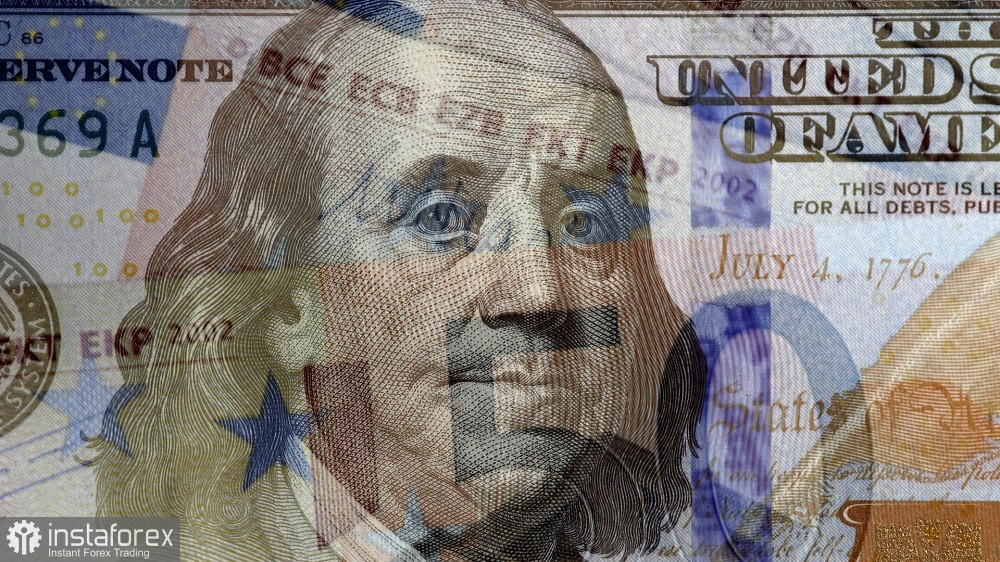
Traders of the EUR/USD do not dare open trading positions on the day of such a significant release, either to the south or to the north. After all, there are significant stakes involved, both literally and figuratively. Following the outcomes of the March meeting, the market is almost certain that the Fed will increase the rate by 25 basis points, but future possibilities for tightening the PEPP are still unclear. Reports on inflation can clear this haze, strengthening the position of the US dollar.
The cost of blue fuel is decreasing
Notably, today's EUR/USD traders paid no attention to the news of the drop in gas prices. A record low of $565 per thousand cubic meters was paid for the product. Natural gas prices have fallen for several reasons. First of all, as February gets closer to the equator, the price drops in anticipation that winter is soon over. Second, compared to this time last year, the reserves in European underground gas storage facilities are currently much higher. Third, numerous nuclear reactors in France have started up again. Fourth, the winter in Europe is still mild. Finally, the American LNG plant's terminal in Freeport (Texas), which suffered fire damage, has already partially restarted operations.
The energy crisis has been a major driver of inflation in the eurozone for many months, but it is now slowly fading. The overall consumer price index is falling quickly (in January, it fell immediately to 8.5% with a forecast for a decline to 9.0%), allowing ECB representatives to keep the public interested in their statements about the regulator's potential next moves following the March 50-point rate hike. It is clear that significantly lowering the price of "blue gasoline" will aid in the process of reducing total inflation. With all of the consequences that follow.
However, traders of the EUR/USD ignored this information and instead appeared to be waiting for tomorrow's inflation data.
CPI will determine whether the southern trend continues.
When the bears were unable to break through the support level of 1.0650 last week, the bearish trend of the euro/dollar pair came to a halt. Sellers were able to move out of the area of the eighth figure, sliding into the range of 1.0650-1.0790, due to strong non-farm and somewhat hawkish remarks from the Fed members. However, an additional information surge is required for the growth of the southern trend in the vicinity of the fifth figure. The inflation data, which will be released in the United States on February 14, may provide such an impetus.
Recall that Fed Chairman Jerome Powell stated in his most recent address that the regulator would need to increase interest rates further to hasten the process of getting inflation back to the desired two percent level. He also stated that the disinflationary process has already started in some areas of the economy.
The consumer price index growth numbers from January are very significant in this regard. The report's elements will either show a decline in the pace of lowering inflation in the US or a trend toward disinflation.
The average consumer price index is expected to rise by 6.2% year over year. Since the middle of last summer, the indicator has been steadily dropping; this will be the seventh step down. The overall CPI, on the other hand, may leave the negative territory every month and rise to 0.5%. The core index, which excludes prices for food and energy, should exhibit declining trends on an annual and monthly basis.
As you can see, early predictions point to the emergence of a trend toward lower inflation. It's important to remember that the likelihood of a 25-point rate hike at the May meeting remains 74% even on the eve of tomorrow's report. These changes will nearly double to 100% if the release is in the "green zone." The likelihood of a rate increase at the June meeting will also rise significantly (it is currently 33%).
Conclusions
The dollar will be significantly impacted by the release of statistics on the growth of the consumer price index, at least during the next few months. The EUR/USD bears' views will be greatly strengthened if US inflation slows down less quickly. The pair can test the area of the fifth figure in addition to breaking through the 1.0650 support level. However, purchasers can plan an equally potent counterattack if the report is released in the "red zone," seeking to acquire a foothold above the 1.0800 level.
As you can see, there are significant stakes involved, thus for the time being, traders of the EUR/USD pair choose to maintain a wait-and-see position.
 English
English 
 Русский
Русский Bahasa Indonesia
Bahasa Indonesia Bahasa Malay
Bahasa Malay ไทย
ไทย Español
Español Deutsch
Deutsch Български
Български Français
Français Tiếng Việt
Tiếng Việt 中文
中文 বাংলা
বাংলা हिन्दी
हिन्दी Čeština
Čeština Українська
Українська Română
Română

